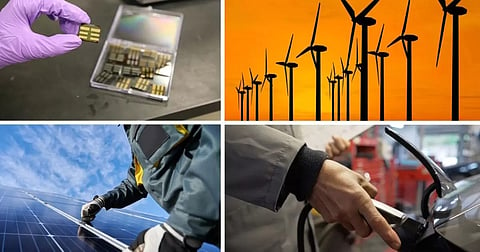Brown Gas Brings New Opportunities for Cleaner and More Efficient Energy
The energy industry is advancing, with new technologies frequently emerging to improve efficiency and sustainability. Brown gas, also known as HHO or oxyhydrogen, is a newer innovation gaining attention for its potential to transform how we use energy. Created by splitting water into hydrogen and oxygen through electrolysis, it offers cleaner energy and increased efficiency for many applications. As concerns about the environment and dwindling resources grow, brown gas generators are becoming an important sustainable solution.
Using a brown gas generator in daily life, both at home and in industries, could greatly change how we manage energy. This discussion will explain the basic science behind brown gas, its many benefits, and its possible applications. We will also look at future innovations and broader adoption of this technology to show why brown gas is a promising step toward a more efficient and sustainable energy future.
What is Brown Gas?
Brown gas, also known as HHO or oxyhydrogen, is a mix of hydrogen and oxygen created by splitting water through electrolysis. In this process, an electric current separates water into hydrogen and oxygen, which are then combined in a set ratio to make brown gas. The method is simple and effective, making it a useful energy source.
When burned, it only produces water vapor, greatly reducing emissions compared to traditional fossil fuels. Its uses include boosting fuel efficiency in engines and providing heat for industrial purposes. Brown gas offers a cleaner and more energy-efficient option, making it a strong candidate for wider use.
Benefits of Brown Gas Generators
Brown gas generators offer several benefits, including efficiency, cost savings, and environmental advantages. First, these generators are highly energy-efficient, converting a large portion of electricity into usable hydrogen and oxygen gas, reducing energy waste. This makes them appealing for both homes and industries. While there’s an initial investment, they save money over time since they use water, an abundant and cheap resource, for fuel.
Maintenance is also inexpensive due to the simplicity of the electrolysis process. Environmentally, brown gas is clean, producing only water vapor as a byproduct, unlike fossil fuels that release harmful emissions. This helps lower carbon footprints and contributes to a healthier planet. Overall, brown gas generators improve energy efficiency, cut costs, and promote environmental sustainability.
Applications in Residential Settings
Integrating brown gas generators into homes offers a new way to use energy efficiently. These generators can power heating systems, providing an eco-friendly alternative to traditional gas or electric heaters. Since brown gas burns cleanly, homes stay warm without releasing harmful emissions, which helps the environment. It can also be used for cooking, replacing regular gas stoves with a cleaner option that only produces water vapor, improving indoor air quality and reducing the risk of gas leaks or fires.
Additionally, for homes interested in generating their own energy, brown gas generators can help lower dependency on outside energy sources and reduce utility bills. With these uses, brown gas technology could significantly change how homes use energy, making it more efficient, affordable, and environmentally friendly.
Industrial and Commercial Uses
Brown gas generators offer a great opportunity for cleaner energy in industrial and commercial settings. Factories and manufacturing plants can especially benefit, as these generators provide the high heat needed for various processes without the heavy emissions from traditional fossil fuels. Since brown gas burns cleanly, producing only water vapor, it significantly reduces pollution, improving air quality in the workplace and helping businesses meet strict environmental rules.
Restaurants and laundromats can also use these generators to power cooking equipment and boilers, improving efficiency and reducing their environmental footprint. Brown gas systems are flexible and can be adapted to meet different needs, making them a practical choice for industries looking to adopt sustainable energy solutions.
Future Prospects and Innovations
As we look at the future of brown gas technology, things seem promising with new innovations and wider use on the way. Researchers are working on ways to improve electrolysis to make brown gas production cheaper and more energy-efficient. Better catalyst materials and using renewable energy could lower costs and reduce environmental impact.
The growing interest in green technologies might lead to more investment in brown gas research, creating ongoing improvements. Plus, as more people become aware of sustainable energy, it's likely that brown gas will be used more in homes, industries, and businesses. From improving home energy systems to transforming industrial processes, brown gas could play a key role in moving toward a greener, more efficient energy future.
Brown gas represents an exciting advancement in the quest for cleaner and more efficient energy solutions. By harnessing hydrogen and oxygen through electrolysis, this technology offers significant environmental benefits, including reduced emissions and improved efficiency. Its applications span residential and industrial settings, promising cost savings and enhanced sustainability. As research and innovation continue to progress, brown gas could become a cornerstone of energy systems worldwide, driving us towards a greener future. With ongoing advancements, the broader adoption of brown gas may reshape how we approach energy consumption, making it an essential component of sustainable development.
Inspired by what you read?
Get more stories like this—plus exclusive guides and resident recommendations—delivered to your inbox. Subscribe to our exclusive newsletter
Resident may include affiliate links or sponsored content in our features. These partnerships support our publication and allow us to continue sharing stories and recommendations with our readers.

